Made with IBM
↧
↧
Comment télécharger une vidéo Youtube très simplement

Si l'on trouve de tout sur Youtube, on ne peut - et c'est bien dommage, mais tout à fait logique - récupérer sur son ordinateur les vidéos en question. Il existe plusieurs solutions pour y parvenir, l'une d'entre elles s'appelle SaveFrom.net et est on ne peut plus simple. Présentation.
Plusieurs méthodes permettent de récupérer une vidéo : copiez-collez le lien de la vidéo sur le site et cliquez sur « Download », ou rajoutez « savefrom.net/ » ou « sfrom.net/ » devant l’url de la vidéo (et cliquez sur « Download »). Plus court encore, utilisez les noms de domaines raccourcis « ssyoutube.com » ou « srapidshare.com ».Comme vous pouvez le voir, SaveFrom.net ne fonctionne pas uniquement avec Youtube. Dailymotion, Vimeo, Facebook, Soundcloud, Twitch et bien d’autres sont supportés.
Mais si vous souhaitez simplifier encore davantage le processus, il suffit d’installer l’add-on – Firefox, Chrome, Safari -. Vous verrez alors, comme sur l’image ci-dessous, apparaître un lien « Download ». Simple et diablement efficace ! Et bien évidemment, SaveFrom.net est entièrement gratuit !
↧
Et si vous empiliez les humains de la planète dans le Grand Canyon ?

Si l'on sait que la planète Terre abrite plus de 7 milliards d'humains, il est extrêmement difficile, voire impossible, d'imaginer ce que cette population représente. Pour cela, une infographie ne saurait y parvenir. C'est probablement pour cette raison que Vsauce a réalisé cette vidéo.
Vsauce est une chaîne éducative sur YouTube présentant plusieurs vidéos sur des sujets scientifiques. S’attachant habituellement à vulgariser certains phénomènes scientifiques complexes, leur dernier épisode en date s’attache à expliciter « combien de choses il y a » dans le monde.On apprendra par exemple que chacun d’entre nous ne produira pas suffisamment de salive durant sa vie pour remplir une piscine olympique ou que l’humanité toute entière fait bien pâle figure par rapport aux briques LEGO en circulation.
Mais s’il fallait ranger toute l’humanité dans un coin du globe, disons par exemple, dans le Grand Canyon, nous prendrions bien peu de place… Voyez plutôt ! De quoi remettre les choses en perspective, assurément.
↧
Les Guru du Marketing
Guy Kawasaki. Auteur en particulier d’un bouquin extra : “How to Drive Your Competition Crazy”
Seth Godin. “The Purple Cow, transform your business by being remarkable”
Geoffrey Moore. “Inside the Tornado” et “Crossing the Chasm”
Peppers & Rogers, les concepteurs du One-to-one Marketing il y a 30 ans. Toujours d’actualité : « The One to One Future »
↧
BlueKiwi
Site de la société, Atos compagnie
http://www.bluekiwi-software.com/fr/
L’entreprise du futur sera “Work & Care” !
http://www.bluekiwi-software.com/fr/2013/12/26/lentreprise-du-futur-sera-work-care/
Le social business est mort, vraiment ?
http://www.bluekiwi-software.com/fr/2013/12/24/le-social-business-est-mort-vraiment/
Etude Deloitte : les employés français boudent la collaboration sociale
http://www.bluekiwi-software.com/fr/2013/12/23/etude-deloitte-les-employes-francais-boudent-la-collaboration-sociale/
http://www.bluekiwi-software.com/fr/
L’entreprise du futur sera “Work & Care” !
http://www.bluekiwi-software.com/fr/2013/12/26/lentreprise-du-futur-sera-work-care/
Le social business est mort, vraiment ?
http://www.bluekiwi-software.com/fr/2013/12/24/le-social-business-est-mort-vraiment/
Etude Deloitte : les employés français boudent la collaboration sociale
http://www.bluekiwi-software.com/fr/2013/12/23/etude-deloitte-les-employes-francais-boudent-la-collaboration-sociale/
↧
↧
CheerSounds - Dream Big
↧
Grandeur et misère du management par objectifs
Il y a plus de dix ans, lorsque le patron d’un grand groupe international affirmait lors d’une interview : « toutes les unités de mon groupe peuvent atteindre leurs objectifs sans que les résultats du groupe soient assurés » , j’avais imaginé qu’il s’agissait d’une lubie d’un patron médiatique. Je n’y avais plus porté attention. Et pourtant depuis cinq ans, lors de mes interventions je suis le témoin de scènes qui questionnent la pertinence du management par objectifs.
Par exemple, les propos du patron sus cité sont repris par des équipes de direction. Les transformations sont si rapides et les pressions concurrentielles tellement exacerbées que les objectifs annuels freinent l’agilité de leurs entreprises, des managers et du personnel.
Plus précisément, j’animais la semaine dernière un séminaire de co développement destiné à des développeurs d’affaires. Ceux ci touchant primes sur objectifs, ils négociaient seuls avec leurs prospects pour ne pas les partager avec d’autres. Certains étaient sur des affaires « du siècle » capable de générer du travail pour plusieurs années. Alors que je leur suggérais de « mettre dans la boucle » les directeurs régionaux et des chefs de projets. Ils me répondirent qu’il n’en était pas question, ces autres contributeurs risquant de « tirer la couverture à eux. »
Enfin, j’accompagne des entreprises en situations critiques dont les dirigeants et les top managers veulent mobiliser leurs équipes sur des » task forces » ou des projets exceptionnels. Et bien un nombre non négligeable de managers intermédiaires et de collaborateurs rechignent en prétextant que cela ne rentre pas dans leurs objectifs.
Mes collègues relatent aussi de telles expériences. Le dogme du management par objectif serait il en train de se fissurer?
Le management par objectifs fut formalisé aux USA par Peter Drucker, après la deuxième guerre mondiale lors d’une phase d’expansion et de décentralisation des grandes entreprises américaines. Octave Gélinier , président de la CEGOS l’adapta en France dans les années 60 en y ajoutant un P : management Participatif par objectifs.Le modèle s’est étendu depuis à toute la planète. Il est maintenant appliqué dans les services publics.
Afin de rendre possible l’accomplissement des buts stratégiques des entreprises, le management par objectif s’est imposé. La déclinaison des objectifs en cascade, de la direction aux collaborateurs en passant par les centres de profits et les services assure en principe la cohérence entre stratégie, management, organisation et travail quotidien. La consolidation de tous ces objectifs partiels est supposée garantir la réussite de l’ensemble.
Les objectifs contribuent aussi à la motivation des managers et collaborateurs. Ils orientent les acteurs vers des buts,ils permettent de se consacrer à l’essentiel de sa fonction, ils réactivent le besoin d’entreprendre et de réussir, ils sont le plus souvent assortis de primes et de récompenses symboliques.
Cette approche a fortement contribué à la compétitivité des entreprises, mais de pratique utile et performante, elle s’est figée en dogme. Tant qu’une démarche managériale reste vivante ,agile et expérimentale elle se révèle efficiente. Mais lorsqu’elle se fige et n’intègre pas les mutations de l’environnement , elle s’instaure en bureaucratie ou technocratie.
Mes propos sont ils exagérés ou vivez vous aussi des effets pervers du management par objectifs?
↧
Yoga Walking

Yoga walking is enlightenment while walking. This is the ultimate kick so to speak! It’s health training, stress reduction, and inner happiness in one. Yoga walking is your daily pilgrimage into the light.Be sure to undertake all the 10 key elements each time, as outlined in the following steps, to get the most benefit from yoga walking.
1. Stomp your anger into the ground while you walk. Let out all the pent-up anger by releasing it through your feet as you walk. What has annoyed you lately? Don’t let it vex you any longer; let it go by stomping it out.
2. Feel your sadness. Resolve feelings of sadness by walking it out. Feel your sadness inside and process it. What makes you sad today? Think several times the mantra: “I’m sad because …”
3. Rotate your shoulders. Do this to remove any tension in your shoulders and your neck. Find the optimal way of moving your shoulders to achieve the best effect.
4. Rotate your spine. When walking, turn your spine to the right, and then to the left, several times. Do this gently, and turn your head with your body.
5. Allow a healing color to trickle through your body from head to foot. Think the name of the color as a mantra. What color do you need now? See what comes to you. It will be different for everyone at different times. “Orange, blue, gold, red…”
6. Feel your connection to the ground world as you walk. Feel the earth beneath your feet. Think the mantra “Earth” and breathe for a minute concentrating your feet and their connection to the earth.
7. Move one hand and send someone a positive sentence. What do you want to say to him or her today? Think of the phrase several times as a mantra. Send light to the world and think: “May all beings be happy. May the world be happy.”
8. Focus on different areas of your body and release tension held in those areas. Focus on the head, chest, abdomen, legs, feet, and into the ground (beneath the feet). Do this during your walk and you will quickly and effectively relieve tension that has built up in all major areas of your body.
9. Visualize a beautiful sun in the sky and clothe yourself with a golden ray of sunshine. Fill yourself with light. Think the word “Light” as a mantra, many times over.
10. Stop all thoughts. For five minutes while walking, focus solely on the walking and your breathing. Allow your mind to become calm. Rest a while. Let all thoughts come and then go bringing the focus back to your walking and breathing.
Walk freely. Go whichever way you feel you want to. Enjoy it. Observe how your mind slowly becomes positive. You are now back from your pilgrimage into the light.
- After each yoga walking session, realize that you have done something wonderful and caring for your physical health and for your mental well-being. Keep your happiness. The light will accompany you through your whole day.
- There once was a woman who was constantly worried. She worried about everything. She worried about her children, her friends, about having enough money to live on and about her health. She wore herself out with her cares and concerns. She was afraid that she could no longer control her fear, and feared that she might not have enough inner strength in the long run to defeat the constant worrying thoughts. Then she got the idea to walk every day for half an hour. She decided upon a favorable time for her and looked for a suitable location. She bought comfortable clothes to wear, airy clothes for sunny days, and an umbrella and sturdy shoes for rainy days; light clothes for summer, and something warm for the winter. Then she started her daily walks. In the beginning she found it very difficult to go every day. But after about three months, she had become accustomed to it and walking had become an integral part of her life. She discovered that she had gained much inner strength. Her mind was positive, and her fears were lessened. Her health improved, and over the years, she became an enthusiastic devotee of yoga walking.
↧
Poincare Conjecture, Perelman way, and Topology of social networks
We examine the connections between the $1 million proof of Poincare conjecture by a reclusive math genius and the topological behavior and information diffusion over social networks.
Guest post by Prasad Kothari, May 3, 2014. A few years ago a brilliant mathematician Grigori Perelman solved a very famous 100 years old problem in topology called Poincare Conjecture. Then, Perelman cut his all contacts with the world and started living lonesome life in his mother’s apartment in Russia . He rejected Fields Medal, a "Nobel"-equivalent prize for Mathematics, and also a $1 million award by Clay institute for solving this problem.
A few years ago a brilliant mathematician Grigori Perelman solved a very famous 100 years old problem in topology called Poincare Conjecture. Then, Perelman cut his all contacts with the world and started living lonesome life in his mother’s apartment in Russia . He rejected Fields Medal, a "Nobel"-equivalent prize for Mathematics, and also a $1 million award by Clay institute for solving this problem. There was lot of media coverage on this issue and many said that even though it is a brilliant solution, it does not mean anything in the practical world. It kept me thinking for years. Here, I present a small article on how Perelman’s work can be used to better information diffusion analysis in social networks:
Perelman’s tool (Ricci Flow entropy calculation – from Wikipedia):
In differential geometry, the Ricci flow is an intrinsic geometric flow. It is a process that deforms the metric of a Riemannian manifold in a way formally analogous to the diffusion of heat, smoothing out irregularities in the metric.
The Ricci flow, named after Gregorio Ricci-Curbastro, was first introduced by Richard Hamilton in 1981 and is also referred to as the Ricci–Hamilton flow. It is the primary tool used in Grigori Perelman's solution of the Poincaré conjecture.
Perelman’s equation gives rise to importance of entropy in diffusion equations through geometric entities. What Perelman did not know at that point was that the similar concept of Shannon entropywill be used in social networks 10 years later to calculate information diffusion.
Connection:
In simple words, the geometric flow defined by Poincare and proved by Perelman, can be measured by entropy using Ricci flow equations (these are non-linear diffusion equations). The social networks which have evolved over time tend to have similar geometric properties and adhere to similar rules and assumptions defined by Perelman. When you take into account degrees of freedom of node of the social network and its association with geometric flow measured by entropy, it pretty much gives you reach of that node and defines the virality of the given post in social network.
This measures the gossip flow through social networks (See: Efficient Reconciliation and Flow Control for Anti-Entropy Protocols, Robbert van Renesse, Dan Dumitriuy, Valient Gough, Chris Thomas, Proceedings of LADIS'08 Workshop)
To expand this discussion, we can say that social networks might be the best tool to validate Perelman’s and other topology proofs. Not only that, but we can apply the same transformational formulas used in topology to transform social networks and control the flow of information through given nodes. Some nodes work as catalysts of the information flow through social networks and some nodes behave as dampening agents of the same information which is similar to the properties exhibited by geometrical objects considered for Navier Stokes equation and Perelman’s work.
Topological behaviour of social networks is the topic less researched because there can be few application of it as of now. But, none the less social networks work as a proxy for all the real life communication and are governed by some of the topological phenomenon we ought to know to improve the existing structures and come up with more catalysts and less dampening agents for the increased flow of information given by the marketing agency using social networks.
The following figure represents one of the visualization of Facebook (Please see: www.emilio.ferrara.name/2012/10/09/large-scale-community-structure-analysis-facebook/). This pretty much converges into topological properties of spheres and geometric flows Perelman worked on.


Prasad Kothari is experienced analytics professional. He worked extensively with clients such as Merck, Sanofi Aventis, Freddie Mac, Fractal Analytics, US Government and NIH on various social media and analytics projects. He has also written books on social media analytics. You can contact him at prasadkothari74@gmail.com or +91-720-811-5292.
↧
↧
Stephen Cave: The 4 stories we tell ourselves about death
Philosopher Stephen Cave begins with a dark but compelling question: When did you first realize you were going to die? And even more interestingly: Why do we humans so often resist the inevitability of death? In a fascinating talk Cave explores four narratives — common across civilizations — that we tell ourselves "in order to help us manage the terror of death."
pinThis talk was presented to a local audience at TEDxBratislava, an independent event. TED editors featured it among our selections on the home page.
- Interactive transcript(27 languages)
↧
Dan Pink: The puzzle of motivation
Career analyst Dan Pink examines the puzzle of motivation, starting with a fact that social scientists know but most managers don't: Traditional rewards aren't always as effective as we think. Listen for illuminating stories — and maybe, a way forward.
pinThis talk was presented at an official TED conference, and was featured by our editors on the home page.
- Interactive transcript(41 languages)
↧
May El-Khalil: Making peace is a marathon
In Lebanon there is one gunshot a year that isn’t part of a scene of routine violence: The opening sound of the Beirut International Marathon. In a moving talk, marathon founder May El-Khalil explains why she believed a 26.2-mile running event could bring together a country divided for decades by politics and religion, even if for one day a year.
pinThis talk was presented at an official TED conference, and was featured by our editors on the home page.
- Interactive transcript(38 languages)
↧
AnaPlan
↧
↧
Employees Quit Management, Not the Company
May 04, 2014
![]()
Instability for Customers and other Employees
When you have employees rotating in and out, and customers dealing with new people on a semi-regular basis, regardless of the viability of the company it gives the appearance of instability and a company that employees don't even like. Turnover can be a huge cancer to your employees as well, as employees have to unexpectedly take on extra responsibilities or duties that they do not have the skill set for, yet are held accountable for their errors.
Cause of Abnormal Turnover
In almost every case, when an employee leaves a company voluntarily, it is Managements fault. Yes, there are the proverbial "nails in the coffin" which Management loves to deflect to - such as "they got offered more money", "their work load is easier over there", and on and on. But if Management was doing their job correctly, in almost every case none of these reasons would be enough to make them want to move to a different company.
How to Keep Low Retention
Every company is different, but these principles stay the same. Use these ideas and suggestions, but also build off of them and create custom policies that fit your company, your employees, and your companies "personality".
I have the opportunity to do a lot of Consulting for Companies - Big and Small Companies, Companies in several different industries, Newer Companies and Established "Dinosaur" Companies, etc. The point is, I have had the privilege of Consulting for just about every type of business there is out on the market. And there is almost always the same problem - companies are experiencing higher turnover than they should - generally speaking of course.
Cost of Turnover
The obvious immediate problem is the cost of replacing an employee. Dun & Bradstreet have a great article where they reference a study done by Institute for Research on Labor and Employment at UC, Berkley. The average cost of replacing an employee is about 1.5 times their Salary. For instance, if you are filling a $60,000.00 position, with all costs incurred, it will cost your company around $90,000.00.
Instability for Customers and other Employees
When you have employees rotating in and out, and customers dealing with new people on a semi-regular basis, regardless of the viability of the company it gives the appearance of instability and a company that employees don't even like. Turnover can be a huge cancer to your employees as well, as employees have to unexpectedly take on extra responsibilities or duties that they do not have the skill set for, yet are held accountable for their errors.
Cause of Abnormal Turnover
In almost every case, when an employee leaves a company voluntarily, it is Managements fault. Yes, there are the proverbial "nails in the coffin" which Management loves to deflect to - such as "they got offered more money", "their work load is easier over there", and on and on. But if Management was doing their job correctly, in almost every case none of these reasons would be enough to make them want to move to a different company.
How to Keep Low Retention
Every company is different, but these principles stay the same. Use these ideas and suggestions, but also build off of them and create custom policies that fit your company, your employees, and your companies "personality".
- ALWAYS DO EXIT INTERVIEWS!!! Unless the employee is extremely hostile, make sure an immediate exit interview is done with employees that tender resignations to understand why they are leaving. And listen - do not try and persuade them that they are wrong. Just listen. For instance, even though you may know that a particular action is not happening, there may be an issue somewhere in the company where there is a "perception" problem which are making employees unhappy that needs addressed.
- Work Atmosphere - Work Hard, Play Hard. Create a fun atmosphere at work. Never before, especially in the US, have we demanded more productivity out our employees since we are competing in a Global Economy now. And guess what, it is tough on everyone and will run you into the ground if you let it. This is a great time to get ideas from employees - game room, relaxation room, fun "brainstorming" sessions (I will do a separate article on this at another time), daily competitions for particular KPI's (Key Performance Indicators - Sales, Revenue, Net Profit, Calls, etc). I am a big believer in spiff's for winning a competition or if an employee does something particularly outstanding) - whether it is a small gift card, cash, company gear - use your imagination.
- Knock Down The Wall Between Mid-Management and the "C" Level - One of the biggest problems are C Level Executives not knowing about problems. I am not letting C Level Exec's off of the hook, as even though they have Managers to handle the day to day Operations, C Level Exec's need to be "keyed" in on what is going on, and make sure that employees can confidentially come to you with an issue to be addressed before it becomes a bigger problem. But it is amazing how good some Mid-Management get at putting up a wall where if there is an issue, that employees find it difficult, if not impossible, to voice a concern that may need to be addressed.
↧
Top 9 des centres commerciaux américains laissés à l’abandon, là où la crise a gagné
- Rolling Acres - Akron, Ohio (1975 - 2008)
Construit en 1975, le centre commercial Rolling Acres a fait les beaux jours de la ville d'Akron aux États-Unis. Plus de 140 commerces y étaient établis, parmi lesquels un cinéma, des chaines de grands magasins et de nombreux restaurants. Tout semblait bien parti, mais petit à petit, des magasins commencent à fermer pour aller s'installer ailleurs. À partir des années 1990, la sécurité du Rolling Acres est moins bien assurée ce qui mène les grandes enseignes et les clients à déserter le centre commercial jusqu'à sa fermeture définitive en 2008.
Plus de photos ici. - Randall Park - North Randall, Ohio (1976 - 2009)
Lors de son ouverture en 1976, le Randall Park était le plus grand centre commercial au monde et la grande fierté du village de North Randall. Pendant des années ce sont près de 5 000 personnes qui viennent travailler au Randall Park, composé d'une multitude de grandes enseignes américaines et d'un multiplexe. En 2002, le centre commercial est sur le déclin après qu'un membre de la sécurité ait infligé des blessures mortelles à un voleur à l'étalage. Sur la pente descendante, les magasins du Randall Park mettent la clé sous la porte les uns après les autres. Et c'est en 2009 que le centre commercial ouvrira ses portes pour la dernière fois.
Plus de photos ici. - Dixie Square - Harvey, Illinois (1966 - 1978)
Le Dixie Square accueille ses clients pour la première fois en 1966. Deux ans plus tard, le succès est au rendez-vous puisque le nombre de commerces passe de 36 à 64, incluant un certain nombre de grandes chaines. Mais il ne sera que de courte durée puisqu'au début des années 1970, la ville d'Harvey devient le berceau de nombreux crimes. Les fusillades et les vols à répétition c'est pas très vendeur, le Dixie Square n'arrive plus à remplir les caisses et ferme en 1978. Mais pour lui, il y aura une vie après la mort puisqu'il servira brièvement d'école et de décor pour le film Blues Brothers. Il restera à l'abandon jusqu'en 2012, année de sa démolition. - Hollywood Fashion Center - Hollywood, Floride (1972 - 2004)
Le Hollywood Fashion Center est inauguré en 1972 et accueille en son centre des grandes et moyennes chaines de magasins qui séduisent rapidement les clients. Mais en 1992, un nouveau centre commercial ouvre ses portes dans la ville voisine, où les commerces du Hollywood Fashion Center partent s'installer les uns après les autres. Un an après, le lieu est complètement déserté et sera laissé à l'abandon pendant 10 ans. En 2003, il est racheté, rénové et réouvert pour une poignée de millions de dollars, mais c'est encore un flop. Aujourd'hui seuls les chauves-souris et les cafards le fréquentent et il devrait être bientôt détruit. - Hawthorne Plaza - Hawthorne, Californie (1977 - 1999)
Pour raviver son dynamisme, la ville de Hawthorne fait construire le Hawthorne Plaza dans les années 1970. 134 boutiques étalées sur deux étages pour ravir les habitants de la région. Son déclin se fait sentir dans les années 1990 du fait de la concurrence et d'un début de crise économique. Plus que 70 magasins ouverts en 1998 et un an plus tard c'est la fermeture définitive du centre commercial. Complètement déserté depuis, il sert de décor pour des films à l'occasion. - Turfland Mall - Lexington, Kentucky (1967 - 2008)
C'est en 1967 que le Turfland Mall voit le jour, investi par plusieurs grandes chaines, des restaurants et un cinéma. Il arrive non sans mal à atteindre et passer les années 1990, assez rudes pour les centres commerciaux. Quelques travaux de rénovations et de nouveaux magasins le remettent en route pour affronter la concurrence, mais le cauchemar se répète et le Turfland Mall est de moins en moins fréquenté. L'année 2008 portera le coup de grâce et clôturera les portes de l'endroit. Malgré tout, il y a aujourd'hui des investisseurs qui ont des projets pour ce centre commercial fantôme. - Woodville Mall - Northwood, Ohio (1969 - 2011)
L'ouverture du Woodville Mall a eu lieu en 1969 et comme les autres, il regroupe tout un panel de chaines de magasins et autres petits commerces. Encore comme les autres, les années 1990 furent un cap difficile à passer et au début des années 2000, une bonne partie des boutiques sont fermées. Pourtant, le Woodville Mall tiendra le coup jusqu'en 2011. L'endroit n'ayant subi presque aucune rénovation en plus de 40 ans, un juge le déclare insalubre et réclame sa fermeture définitive. Il a été démoli en mars 2014. - Crestwood Mall - St Louis, Missouri (1956 - 2012)
Ouvert pendant plus de 50 ans, le Crestwood Mall a lui aussi souffert de l'apparition de centres commerciaux concurrents. Il détient quand même le record de longévité de cette liste, mais l'apparition de nouvelles galeries commerciales aux alentours et son accès difficile par l'autoroute conduit le Crestwood Mall à sa perte. Il tire sa révérence en 2012 et devrait être rasé d'ici peu. - Cloverleaf Mall - Richmond, Virginie (1972 - 2007)
Ouvert en 1972, le Cloverleaf devient rapidement le lieu de prédilection des familles pour profiter de la quarantaine de boutiques à disposition. Jusque dans les années 1980, tout roule pour le centre commercial, mais la décennie suivante sera moins fluctuante. Les meilleurs clients se plaignent de la présence croissante de voyous en baggys et craignent pour leur sécurité. On parle même de gangs, ce qui n'encouragera pas les commerçants à renouveler leur bail. En 2007, le Cloverleaf ferme de façon permanente.
↧
France Télévisions au bord du "burn out", selon un rapport d'experts
Climat de tension, dépressions à tous les étages, tentatives de suicides chez certains salariés: un volumineux rapport, réalisé à la demande des syndicats par le cabinet d'expertise RH Emergences, dresse un constat alarmant de l'état de santé, physique et morale, de l'entreprise.

Cinq mois d'enquêtes et des dizaines d'auditions en interne: ce rapport d'expertise est plus qu'un simple signal d'alarme.
afp.com/Jean Ayissi
[Exclusif] L'entreprise France Télévisions est-elle au bord du "burn out"? Et le plan de départs volontaires décidé par sa direction est-il la goutte d'eau qui risque de faire déborder le vase et mettre le feu à l'entreprise ?
"Force est de constater qu'il y a unanimité des agents de France Télévisions sur la mauvaise ambiance qui règne partout dans l'entreprise (....)", peut-on lire. "Les agents sont en attente de réponses à leurs questions que ce soit sur leur situation professionnelle, sur l'avenir de leur métier ou sur les choix stratégiques de l'entreprise. Cela engendre une perte de confiance vis à vis de la direction, une insécurité et l'incapacité de s'engager dans un projet fédérateur, mobilisant les énergies et les compétences. Les nombreux entretiens menés nous permettent de pointer de nombreux facteurs de risques réunis chez France Télévisions. Ils nous amènent à poser le constat d'une dégradation actuelle des conditions de travail. (...) Toutes ces situations qui sont susceptible d''abimer' le sens que les salariés donnent à leur travail comportent alors un risque pour les conditions de travail des salariés et leur santé".
Au fil des pages, ce rapport pointe tout le mal être d'une entreprise déboussolée, désorientée et en proie à de nombreuses et graves tensions en interne, susceptibles de mettre en danger l'équilibre et la santé d'un très grand nombre de ses salariés, indique le texte, témoignages à l'appui.
Ainsi, peut-on lire : "Les rapports de la médecine du Travail évoquent de manière récurrente sur l'ensemble des sites et ce depuis des années: des difficultés des salariés à trouver leur place dans les réorganisations successives, des relations de travail conflictuelles, des missions pas toujours bien définies, un manque de communication et de transversalité, des surcharges de travail générant des souffrances psychologiques, un sentiment d'iniquité et un manque de reconnaissance, des situations de très mauvaise santé aggravées par des facteurs liés à l'organisation du travail et à la planification (....)
Peut-on parler d'un syndrome France Télécom, alors que les auditeurs tirent la sonnette d'alarme, en évoquant certains cas de salariés victimes de graves problèmes de santé, d'autres, ou d'autres ayant tenté de mettre fin à leurs jours? "Tous ces éléments contribuant à une ambiance dégradée ont d'ores et déjà un impact sur la santé des collaborateurs. Certains CHSCT ont demandé des expertises sur des risques graves concernant la santé (...) Les services de santé au travail indiquent dans leurs différents rapports annuels des situations d'arrêt de longue durée, ainsi que des AVC, que certains représentants du personnel n'hésitent pas à relier à des 'pressions, des mauvais traitements ou des conditions de travail stressantes avant leurs arrêts-maladies'. Les collaborateurs rencontrés confirment ce sentiment et font le parallèle de manière quasi-systématique entre les conditions de travail et les problèmes de santé rencontrés par eux-mêmes ou leurs collègues et notamment les AVC dont le stress est reconnu comme l'un des 10 facteurs de risques aggravant"
Tous les entretiens destinés à éclairer cette étude ont été réalisés au mois d'octobre 2013. Emergence rappelle qu'au 31 juillet 2013, France Télévisions comptait un effectif permanent de 9086,86, dont 6138 personnels techniques et administratifs, cadres et non cadres et 2706 journalistes. Auxquels s'ajoutent un effectif non permanent de 1571 personnes (cachetiers, pigistes, intermittents, Contrats à durée déterminée, contrats de professionnalisation. Autant dire, une poudrière à l'heure où l'entreprise s'interroge sur le nom de celle ou de celui qui succèdera à Rémy Pflimlin à l'été 2015.
Parmi les nombreuses raisons d'inquiétude et de mal être au sein de la maison, figurent les "placardés". Ainsi, lit-on, encore : "La question des placards a également été très souvent invoquée dès les premiers entretiens pour évoquer le fort sentiment d'injustice de la part des collaborateurs impactés en faisant référence à de nombreuses situations où des personnes étaient "placardisés", ce terme évoquant dans ce sens des personnes payées à ne rien faire ou tout du moins pas grand-chose et qui bénéficiaient de cette situation de par des relations proches avec des personnes influentes (...) De nombreuses personnes mentionnent en entretien une dégradation des relations humaines, des tensions, des accrochages entre salariés, parfois des échanges d'insultes. Une défiance vis-à-vis du management est signalée par endroit, des cas de suicides, des problèmes de santé grave sont directement mis en lien avec des conditions de travail dégradées. Des CHSCT mandatent des psychologues et des audits sur le thème de la souffrance au travail ".
Ce rapport s'achève sur une suite de propositions destinées à retisser un lien entre la direction de France Télés et ses salariés: une urgence pour le cabinet Emergences. La première consiste à "définir et mettre en oeuvre une conduite du projet, participative et collective"
A bientôt un an de la fin du mandat du PDG de France Télévisions, cet objectif semble, compte tenu du constat dressé ci-dessus, bien illusoire et peine perdue.
Rédigé à la demande du Comité d'hygiène, de sécurité et des conditions de travail de France Télés, (le CHSCT), et remis en mars dernier aux syndicats et à la direction, un volumineux rapport d'expertise, que nous nous sommes procurés, sur les conséquences de ce projet de réorganisation, a été réalisé courant mars par un cabinet d'audit indépendant,Emergences. Et ses constats et conclusions, concernant l'état moral et de santé de l'entreprise, sont, au-delà même de ce plan de restructuration, tout simplement alarmants.
"Force est de constater qu'il y a unanimité des agents de France Télévisions sur la mauvaise ambiance qui règne partout dans l'entreprise (....)", peut-on lire. "Les agents sont en attente de réponses à leurs questions que ce soit sur leur situation professionnelle, sur l'avenir de leur métier ou sur les choix stratégiques de l'entreprise. Cela engendre une perte de confiance vis à vis de la direction, une insécurité et l'incapacité de s'engager dans un projet fédérateur, mobilisant les énergies et les compétences. Les nombreux entretiens menés nous permettent de pointer de nombreux facteurs de risques réunis chez France Télévisions. Ils nous amènent à poser le constat d'une dégradation actuelle des conditions de travail. (...) Toutes ces situations qui sont susceptible d''abimer' le sens que les salariés donnent à leur travail comportent alors un risque pour les conditions de travail des salariés et leur santé".
Au fil des pages, ce rapport pointe tout le mal être d'une entreprise déboussolée, désorientée et en proie à de nombreuses et graves tensions en interne, susceptibles de mettre en danger l'équilibre et la santé d'un très grand nombre de ses salariés, indique le texte, témoignages à l'appui.
Ainsi, peut-on lire : "Les rapports de la médecine du Travail évoquent de manière récurrente sur l'ensemble des sites et ce depuis des années: des difficultés des salariés à trouver leur place dans les réorganisations successives, des relations de travail conflictuelles, des missions pas toujours bien définies, un manque de communication et de transversalité, des surcharges de travail générant des souffrances psychologiques, un sentiment d'iniquité et un manque de reconnaissance, des situations de très mauvaise santé aggravées par des facteurs liés à l'organisation du travail et à la planification (....)
Peut-on parler d'un syndrome France Télécom, alors que les auditeurs tirent la sonnette d'alarme, en évoquant certains cas de salariés victimes de graves problèmes de santé, d'autres, ou d'autres ayant tenté de mettre fin à leurs jours? "Tous ces éléments contribuant à une ambiance dégradée ont d'ores et déjà un impact sur la santé des collaborateurs. Certains CHSCT ont demandé des expertises sur des risques graves concernant la santé (...) Les services de santé au travail indiquent dans leurs différents rapports annuels des situations d'arrêt de longue durée, ainsi que des AVC, que certains représentants du personnel n'hésitent pas à relier à des 'pressions, des mauvais traitements ou des conditions de travail stressantes avant leurs arrêts-maladies'. Les collaborateurs rencontrés confirment ce sentiment et font le parallèle de manière quasi-systématique entre les conditions de travail et les problèmes de santé rencontrés par eux-mêmes ou leurs collègues et notamment les AVC dont le stress est reconnu comme l'un des 10 facteurs de risques aggravant"
Tous les entretiens destinés à éclairer cette étude ont été réalisés au mois d'octobre 2013. Emergence rappelle qu'au 31 juillet 2013, France Télévisions comptait un effectif permanent de 9086,86, dont 6138 personnels techniques et administratifs, cadres et non cadres et 2706 journalistes. Auxquels s'ajoutent un effectif non permanent de 1571 personnes (cachetiers, pigistes, intermittents, Contrats à durée déterminée, contrats de professionnalisation. Autant dire, une poudrière à l'heure où l'entreprise s'interroge sur le nom de celle ou de celui qui succèdera à Rémy Pflimlin à l'été 2015.
Parmi les nombreuses raisons d'inquiétude et de mal être au sein de la maison, figurent les "placardés". Ainsi, lit-on, encore : "La question des placards a également été très souvent invoquée dès les premiers entretiens pour évoquer le fort sentiment d'injustice de la part des collaborateurs impactés en faisant référence à de nombreuses situations où des personnes étaient "placardisés", ce terme évoquant dans ce sens des personnes payées à ne rien faire ou tout du moins pas grand-chose et qui bénéficiaient de cette situation de par des relations proches avec des personnes influentes (...) De nombreuses personnes mentionnent en entretien une dégradation des relations humaines, des tensions, des accrochages entre salariés, parfois des échanges d'insultes. Une défiance vis-à-vis du management est signalée par endroit, des cas de suicides, des problèmes de santé grave sont directement mis en lien avec des conditions de travail dégradées. Des CHSCT mandatent des psychologues et des audits sur le thème de la souffrance au travail ".
Ce rapport s'achève sur une suite de propositions destinées à retisser un lien entre la direction de France Télés et ses salariés: une urgence pour le cabinet Emergences. La première consiste à "définir et mettre en oeuvre une conduite du projet, participative et collective"
A bientôt un an de la fin du mandat du PDG de France Télévisions, cet objectif semble, compte tenu du constat dressé ci-dessus, bien illusoire et peine perdue.
En savoir plus sur http://www.lexpress.fr/actualite/medias/france-televisions-au-bord-du-burn-out-selon-un-rapport-d-experts_1535779.html#HxCmps8gm17hJ78f.99
↧
Le burn-out, une maladie professionnelle ?
05/05/2014 by Leave a Comment![burn-out 3]() Le burn-out résulte de l’entremêlement de trois dimensions.
Le burn-out résulte de l’entremêlement de trois dimensions.
Tout d’abord l’épuisement émotionnel, qui est le trait central du burn-out. C’en est une condition nécessaire mais non suffisante.
Ensuite la dépersonnalisation de la relation, qui est notamment caractérisée par un manque d’intérêt pour le travail et une attitude interpersonnelle négative. C’est une stratégie de faire face à l’épuisement émotionnel.
Enfin, l’accomplissement personnel réduit qui s’accompagne d’un sentiment de déclin des compétences. Le professionnel s’évalue négativement, son estime de soi baisse, tout comme son sentiment d’auto-efficacité. La chute du sentiment d’accomplissement entraîne la montée de l’épuisement et la perte de l’intérêt pour autrui.
Read more: http://gestionpaiegrhquichoisir.com/2014/05/burn-out-maladie-professionnelle/#ixzz30qc2UQ3V
Under Creative Commons License: Attribution Non-Commercial Share Alike
Fin mars 2014, un groupe de travail composé d’experts, de médecins et de psychologues est réuni par le ministère du travail. Sa mission ?« Clarifier ce que recouvre le burn-out, pour mieux le prévenir ». Il n’est cependant pas question de traiter des questions de reconnaissance et de réparation. En ce sens, peut-on tout de même considérer le burn-out comme une maladie professionnelle ?
Le burn-out, c’est quoi ?
 Le burn-out résulte de l’entremêlement de trois dimensions.
Le burn-out résulte de l’entremêlement de trois dimensions.Tout d’abord l’épuisement émotionnel, qui est le trait central du burn-out. C’en est une condition nécessaire mais non suffisante.
Ensuite la dépersonnalisation de la relation, qui est notamment caractérisée par un manque d’intérêt pour le travail et une attitude interpersonnelle négative. C’est une stratégie de faire face à l’épuisement émotionnel.
Enfin, l’accomplissement personnel réduit qui s’accompagne d’un sentiment de déclin des compétences. Le professionnel s’évalue négativement, son estime de soi baisse, tout comme son sentiment d’auto-efficacité. La chute du sentiment d’accomplissement entraîne la montée de l’épuisement et la perte de l’intérêt pour autrui.
Le burn-out peut donc être défini comme un syndrome d’épuisement émotionnel, de dépersonnalisation et de baisse de l’accomplissement personnel qui apparaît chez les individus impliqués professionnellement auprès d’autrui.
Le burn-out présente ces caractéristiques :
- la prédominance de symptômes disphoriques tels que l’épuisement mental ou émotionnel.
- La présence combinée de symptômes mentaux et comportementaux liés au travail, et apparaissant chez une personne dénuée de pathologie mentale antérieure.
- Enfin, la baisse des performances et de l’efficacité au travail, attribuée aux attitudes et comportements négatifs.
Le burn-out, ça concerne qui ?
Une étude a évalué à trois millions le nombre d’actifs qui présenteraient un risque élevé de développer un burn-out en France. Toutes les catégories professionnelles sont concernées, mais le risque est particulièrement élevé chez les agriculteurs, les artisans, les commerçants, les chefs d’entreprise et les cadres.
Selon cette même étude, les femmes sont généralement plus susceptibles de développer ce syndrome que les hommes.
Les quinquagénaires sont en outre plus exposés au burn-out que les trentenaires.
Selon cette même étude, les femmes sont généralement plus susceptibles de développer ce syndrome que les hommes.
Les quinquagénaires sont en outre plus exposés au burn-out que les trentenaires.
Et vous, pensez-vous risquer de souffrir de burn-out ?
Pour le savoir, faites le test !
Pour le savoir, faites le test !
La thèse socio-cognitive propose une continuité entre l’engagement au travail et le burn-out, qui se situeraient aux deux pôles d’un continuum. Le burn-out apparaîtrait effectivement en cas de discordance perçue entre un individu et son environnement professionnel.
On dénombre d’ailleurs six critères d’évaluation du rapport entre une personne et son travail :
On dénombre d’ailleurs six critères d’évaluation du rapport entre une personne et son travail :
- les sentiments de justice,
- le sentiment d’appartenance au collectif,
- le contrôle sur son travail,
- le niveau de récompense,
- la congruence entre ses propres valeurs et celles de l’organisation,
- et enfin, la charge de travail imposée au salarié.
Le sur-engagement au travail est ainsi le point commun à toutes les personnes qui développent un burn-out. Toutefois, avant le sur-engagement, il y a l’engagement. L’individu victime de burn-out apprécie donc son travail et lui accorde une place très importante dans sa vie. Les actifs les plus touchés sont même souvent les meilleurs éléments d’une société. C’est la chronicité des épisodes de détresse qui va pousser le salarié à entrer dans le cercle vicieux du burn-out.
Aujourd’hui, les individus victimes de burn-out réclament à l’unisson que ce syndrome soit reconnu comme une maladie professionnelle par la sécurité sociale. Malheureusement, ils ne sont qu’une minorité à obtenir cette reconnaissance. Pour cela il faut en effet qu’un lien direct avec le travail soit mis en évidence, mais la tâche est plus ardue qu’elle n’y paraît…
Pour en savoir plus :
Read more: http://gestionpaiegrhquichoisir.com/2014/05/burn-out-maladie-professionnelle/#ixzz30qc2UQ3V
Under Creative Commons License: Attribution Non-Commercial Share Alike
↧
↧
Formula 1 Pit Stops 1950 & Today
↧
10 mobile marketing statistics to help justify your budget
Brian Honigman is a marketing consultant, a professional speaker and freelance writer. This post originally appeared on the Adknowledge blog.
Many marketers have experienced it: presenting a case to superiors for a larger budget or defending how they spent the existing budget.
At times, it can be a difficult process with lots of push back and discussion, while other times it’s an easy conversation due to the success of your spending decisions or widespread internal buy-in.
Either way, budget management is a critical aspect of your role as a marketer, or soon will be at one point in your career. Your marketing budget should be informed and defended with facts and figures to support the channels you wish to market your organization on and why.
Mobile, as a marketing channel, can no longer be ignored and must be addressed in order to succeed.
A mobile-first advertising strategy is already in place by many companies looking to reach their customers where they’re actually active. Whether you’re focused on Facebook advertising, banner ads, marketing your mobile app or looking to drive greater brand awareness on multiple mobile channels, it’s important that a portion of your advertising spend is allocated to mobile marketing.
Start now, before your business gets left behind, as many of your competitors already have active mobile advertising campaigns in motion.
To accomplish this goal and defend your decision to apply some of your spend to mobile marketing, use these statistics to support your budget allocations.
1. Spending on mobile advertising will grow substantially year-over-year across industries
In 2014, mobile advertising is expected to grow 75.1 percent to $31.45 billion, which makes up nearly one-quarter of total digital ad spending worldwide.According to eMarketer, Google and Facebook are responsible for a majority of this growth in mobile ad spend. Both companies saw their net mobile ad revenue increase by $6.92 billion in 2013.
Takeaway:
This is a strong indication that organizations allocating marketing spends to mobile-focused channels are seeing a strong ROI from their efforts.
Although these statistics are predictions, they rely heavily on the explosive growth of advertising dollars regularly being allocated to mobile channels.
This most likely indicates that these channels are working for these businesses to drive measurable results or they wouldn’t continue to allocate their budgets to them.
Mobile ad spending will continue to grow as advertising platforms like Facebook begin to expand offerings to suit the needs of advertisers like adding call-to-action buttons to their ads and the other constant improvements to both ad units and tools.
2. Consumers are less likely to comparison shop when using a mobile app
According to comScore, 46 percentof shoppers say they are less likely to shop around for other options when they’re using a company’s mobile app. This data was compiled from a survey of more than 3,000 U.S. online shoppers that asked them questions about their shopping behavior.Takeaway:
It is time to begin either spending advertising dollars on driving more installs of your mobile app or developing a mobile app to begin with. Consumers are less likely to abandon a shopping experience on your mobile app as they are on a mobile website.
It’s recommended that you drive mobile traffic to your app to decrease the likelihood that your customers will shop your competitor’s products and services.
Focus your spend on the development of a mobile app or driving traffic to an existing app using mobile app install ads on Facebook, through the new Twitter app card ads or elsewhere on mobile.
3. More than half of consumer time spent on the Internet is on mobile devices
Consumers today spend nearly 60 percent of their time on the Internet on their mobile devices, as compared to their desktop or laptop computer, tablet and other devices.Takeaway:
There is no reason why your business should not be focusing at least half of its advertising spend on mobile channels because that’s where your audience is active online today.
It’s important to measure the ROI of your mobile marketing through lifetime value, or LTV, since there are typically many touch points when a customer converts on a mobile device and this must be taken into consideration when understanding the cost of conversions as part of your budget.
The LTV of consumers is important to consider, especially with mobile, since they may interact with your business on one channel, but not yet convert until interacting with your business twice more on other channels until they convert a few weeks later.
In other circumstances, a one-time shopper can become a lifelong customer by simply being re-engaged on mobile in the future.
Since consumers are using mobile more extensively today, it’s important to understand the LTV each customer can bring to your business if properly reached with the right messaging on the mobile channels where they’re most active.
4. The growing intersection of mobile and the retail experience becomes a bigger priority
Alex and Ani, a lifestyle and accessories brand, improved sales by 318 percent with a mobile point-of-sale (POS) system. The mobile POS system allowed store associates at Alex and Ani retail locations to use iPod Touches to checkout customers.Instead of having three POS terminals at a store location, they are able to checkout customers at 25 locations throughout their stores using a mobile device operated by store associates.
Takeaway:
Your mobile marketing can potentially affect the success of your brick-and-mortar stores offline, creating a cohesive and enjoyable experience for your customers.
Allocating your marketing budget on mobile can help generate value and utility for your customers online and in-person, which can lead to increased sales, customer engagement and a stronger LTV from your customer base.
5. Mobile traffic will grow significantly in the next five years with no end in sight
According to the Ericsson Mobility report, growth in mobile data traffic between 2013 and 2019 will grow at a CAGR (compound annual growth rate) of 45 percent.With these calculations in mind, it’s estimated there will be 10 times the amount of total mobile data traffic by 2019.
Takeaway:
Companies of all sizes have no choice but to start advertising and building an active community on mobile in order to remain relevant and engaged with their customers.
If you aren’t quickly moving to create an active presence on mobile, your competitors will likely outpace you in the coming months and years with their existing mobile campaigns as your business tries to catch up with the market and its explosive growth.
6. Video will continue to represent a majority of activity occurring on mobile devices
By 2018, mobile video will represent 69 percent of all mobile traffic, which is an increase from 53 percent in 2013. Last year, users watched about two hours of video per month on their mobile phones.Takeaway:
The question many businesses ask when tasked with using mobile to market themselves is What should I actually be doing on mobile to market my company effectively? One of the best answers is advertising with video in a variety of ways.
Video advertising on mobile is a must in order to capture the attention of a majority of users using mobile devices, whether through pre-roll ads, branded video content or the effective distribution of video content with the right publishers.
With the right strategy, mobile video has a strong ROI that can produce results in the long-term for your organization. It’s all about creating and distributing video content with a goal of longevity as opposed to focusing too heavily on virality.
Video should already be a significant part of your marketing mix today, if not, here’s more on the value of video for your content marketing strategy.
Video is a viable option for marketers to reach their audiences, especially at the scale of mobile, since it caters to the different consumption patterns of users, it develops messaging that can meet the unique nuances of various platforms, it can add an additional revenue stream for your business and can help build a long-term relationship with your customers.
7. Facebook mobile users continue to exceed Facebook desktop users
Facebook recently reported that it has one billion monthly active users on its mobile apps, as well as 200 million monthly active users on Instagram.Takeaway:
With Facebook’s large network of all types of users, as well as comprehensive targeting capabilities to reach them, it’s a no brainer that it will continue to be a powerful channel for reaching your customer base on mobile.
Facebook saw a major boost in advertising revenue from mobile app install ads, since it is working effectively at driving users to the mobile apps of organizations that have difficulty achieving visibility in the app stores.
Facebook also introduced mobile app ads that encourage Facebook users to revisit downloaded apps, which has helped to increase engagement with many organization’s app offerings.
Take into consideration the unique targeting capabilities Facebook offers for reaching the right persona on their mobile phone, based on their past interactions with your website or similarities to your existing customers.
8. Redeeming mobile coupons is on the rise
In 2014, one in four mobile phone users will redeem a coupon via a mobile device. According to eMarketer estimates, the number of smartphone coupon users rose by 66 percent in 2012 and continues to rise year over year.Takeaway:
Increased mobile phone usage has made claiming coupons and offers on-the-go more convenient for consumers looking for deals from their favorite brands. It’s a prime opportunity to reach your customer base while they’re shopping online for your offerings, or similar products from competitors.
One of the best opportunities mobile coupons provide for your business is presenting them to customers as they shop your brick and mortar stores in person. They are already visiting your business, which makes it a prime opportunity to incentivize them to make a purchase.
Finally, advertising your coupons, deals and offers on mobile devices is still an extremely new method of marketing to your customer. Therefore, there is far less struggle with competitors to reach your audience with mobile coupons and as a result, an opportunity to achieve greater visibility with your campaigns.
9. Twitter was born on mobile and continues to offer opportunities for growth on these devices
According to Twitter, 76 percent of Twitter users login via mobile devices. To date, Twitter users are sharing 500 millions tweets per day.Takeaway:
This means that advertisers should focus a majority of their spend on Twitter ads on mobile as opposed to desktop. It is important to allocate a spend for both desktop and mobile, but place more of your spend on Twitter mobile ads and continue to adjust throughout the duration of the campaign.
According to the Wall Street Journal, conversion costs can vary widely on Twitter, depending on the vertical and your optimization efforts. Take this cost-per-conversion into consideration when segmenting your advertising budget and applying it to each mobile marketing channel.
With proper management and integration with the Twitter ads API across existing advertising channels, businesses are able to actually measure the impact of their monthly Twitter advertising campaigns.
10. A majority of mobile searches result in immediate action
According to iAcquire, 70 percent of mobile searches lead to action on a website within one hour of when the search was conducted. The study suggests that mobile users doing searches are more motivated to take immediate action than someone searching from a desktop or laptop computer.Takeaway:
First and foremost, this statistic stresses how important it is for your organization to have a mobile-friendly website to ensure a person is able to take an appropriate action with your business.
If a mobile phone user is visiting your website to find the location of your stores and your website isn’t mobile-friendly, your business could be missing out on attracting potential customers.
Second, this speaks to the effectiveness of mobile advertising at helping to drive awareness, app downloads, increase purchases and more since the intent of a user to perform an action is much stronger.
There are fewer distractions on a mobile screen, therefore certain actions taken on a mobile device get more attention from a mobile user than they would on a desktop or laptop.
As an advertiser, there are many opportunities to gain the attention of a potential customer with such a small screen, fewer opportunities for distractions and a stronger intent, whether from a pre-roll ad on a YouTube video or an in-feed ad in their favorite publication.
Which mobile marketing statistics did you find the most surprising? Did we miss any important mobile statistics from 2014 that we should have included? Please share your thoughts in the comments!
↧
Eight Principles for Transforming Cybersecurity

Enterprises today not only have to defend their assets – they must hunt.
Just five short years ago, cybercrime represented just 1% of all economic crime (source: PricewaterhouseCoopers, Global State of Information Security Survey, 2011). By 2011, that number jumped to 23%, and we can continue to expect those numbers to climb.
The numbers aren’t the only thing increasing – so too are the complexity and persistence of these crimes. According to an ISACA survey of more than 1,000 security professionals, more than 9 in 10 respondents believe advanced persistent threats (APTs) represent a credible threat to national security or economic stability. Among the enterprises that have experienced an APT attack, one in three were unable to determine the source (source: ISACA, Advanced Persistent Threat Awareness Study Results, 2014 (publishing in April).
There is no question that cybercriminals are more sophisticated than ever before. Enterprises today not only have to defend their assets – they must hunt. Detection and response, rather than prevention, are becoming the focus. But with a growing skills gap, still-lean budgets and constantly evolving threats, where can enterprises start?
Eight principles
In its Transforming Cybersecurity Using COBIT 5, global association ISACA recommends starting with these eight principles:- Know the potential impact of cybercrime and warfare. Make sure you are aware of the potential damage a cyber attack can cause and the wide-ranging impact it may have. The organization must decide the risk level it can tolerate in order to ensure the appropriate level of cybersecurity governance.
- Understand end users, their cultural values and their behavior patterns. As the ISACA guide notes, “Business impact and business risk relating to cybersecurity arrangements are strongly influenced by organizational and individual culture.” The culture – and the resulting end-user behavior and patterns – should be accounted for in the enterprise’s strategic, tactical and operational security measures.
- Clearly state the business case for cybersecurity and the risk appetite of the enterprise. The business case outlining expected value and tolerable risk will drive the overall cybersecurity strategy. As a result, the business case must have depth and definition. Among its contents, it must include cost-benefit considerations and the organization’s culture and values pertaining to cybersecurity.
- Establish cybersecurity governance. There is no need to reinvent the wheel here.Adopting and customizing a governance framework such as COBIT will give you the tried, tested and proven governance guidance you need. By effectively governing cybersecurity, an organization provides a clear sense of direction and boundaries.
- Manage cybersecurity using principles and enablers. The principles and enablers found in COBIT 5 will help your organization ensure end-to-end governance that meets stakeholder needs, covers the enterprise to end and provides a holistic approach, among other benefits. The processes, controls, activities and key performance indicators associated with each enabler will provide the enterprise with a comprehensive picture of cybersecurity.
- Know the cybersecurity assurance universe and objectives. Cybersecurity covers multiple areas and aspects within information security. To provide adequate assurance over cybersecurity, the cybersecurity universe must be well defined, and the assurance objectives must be clear and manageable.
- Provide reasonable assurance over cybersecurity. This principle requires all three lines of defense within an enterprise to be defined and managed. This includes monitoring, internal reviews, audits and, as needed, investigative and forensic analysis.
- Establish and evolve systemic cybersecurity. Cyber attacks target the weakest link in the system. As a result, cybersecurity must be looked at as a system of interdependent elements and the links between them. To optimize cybersecurity, the enterprise must have complete understanding of this dynamic system and must be fully aware that security governance, management and assurance cannot be viewed in isolation.
Using COBIT
While no company can be 100% secure, regardless of the controls and security measures it has in place, companies that use good practices such as COBIT are off to a good start. COBIT treats cybersecurity systemically. It helps ensure that an organization has end-to-end policies and processes in place, which helps them recover more quickly and effectively after a breach.Using COBIT 5, enterprises approach cybersecurity as a business process that is aligned with the enterprise’s governance, risk management and compliance arrangements. They divide it into four phases: prepare, investigate, remediate/respond and transform. The “transform” phase is especially key, as it ensures that the post-incident analysis leads to key insights and improvements that are put into practice. By using COBIT 5 to transform cybersecurity in your enterprise, you can help ensure that cybersecurity is transformed systemically.
Consider this sobering statistic from the ISACA APT survey: one in five enterprises have experienced an APT attack. That number is only going to grow. Take advantage of the excellent guidance out there and make sure your enterprise is following these eight principles; to make sure you are ready to prepare for, detect and respond to a cybersecurity attack.
↧
More Pages to Explore .....






 Crédits
Crédits  Crédits
Crédits 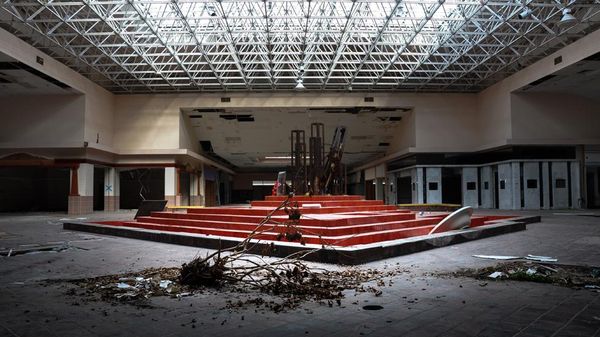 Crédits
Crédits  Crédits
Crédits  Crédits
Crédits 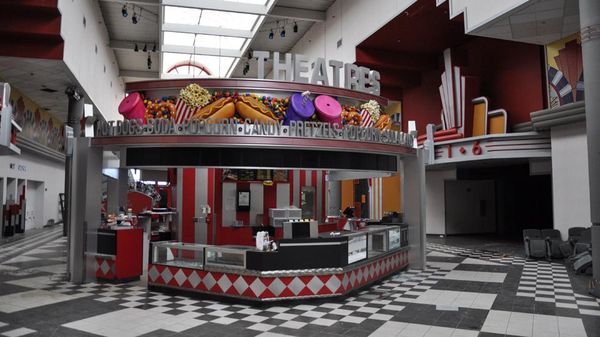 Crédits
Crédits  Crédits
Crédits  Crédits
Crédits  Crédits
Crédits  Crédits
Crédits 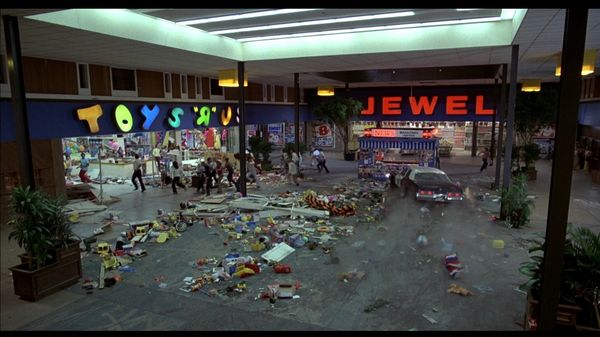 Crédits
Crédits  Crédits
Crédits  Crédits
Crédits  Crédits
Crédits 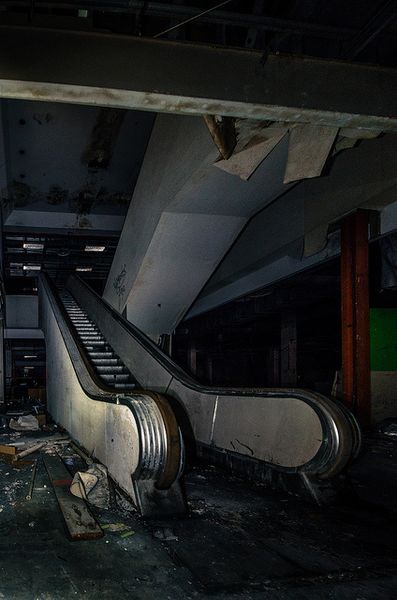 Crédits
Crédits 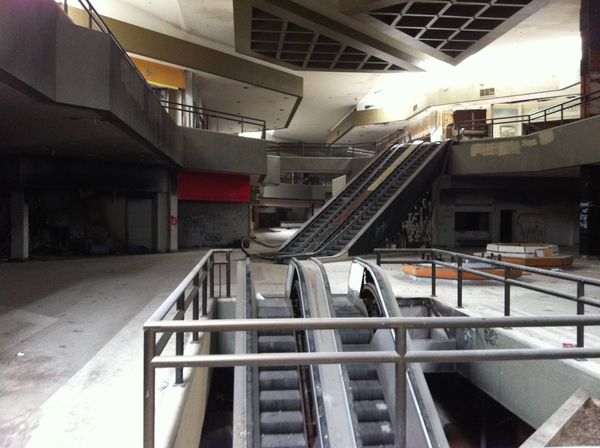 Source
Source 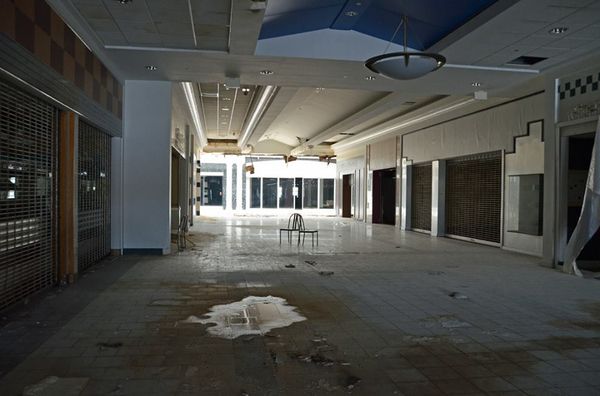 Source
Source 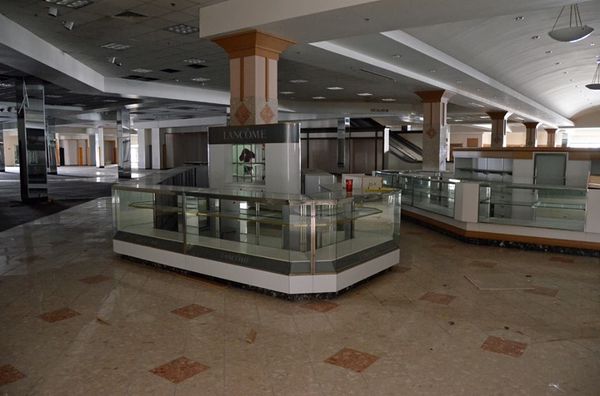 Source
Source  Source
Source 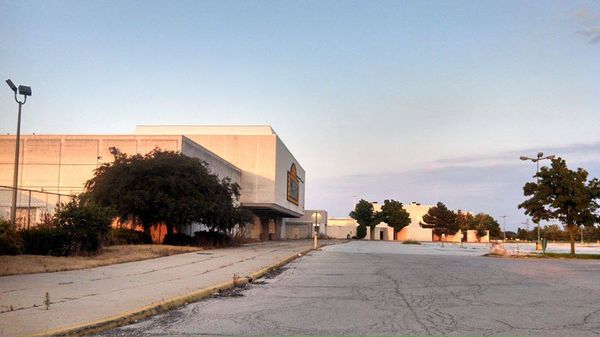 Source
Source  Source
Source  Source
Source  Source
Source 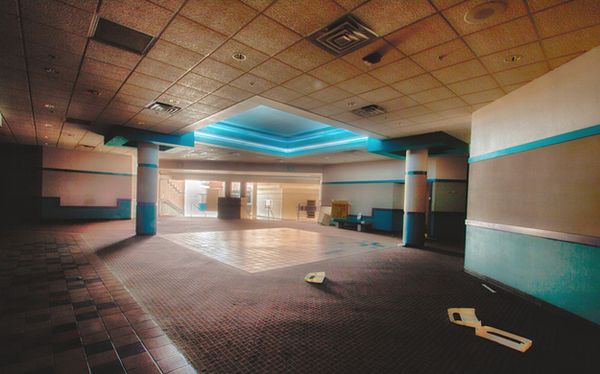 Crédits
Crédits  Crédits
Crédits  Crédits
Crédits  Crédits
Crédits  Crédits
Crédits  Crédits
Crédits 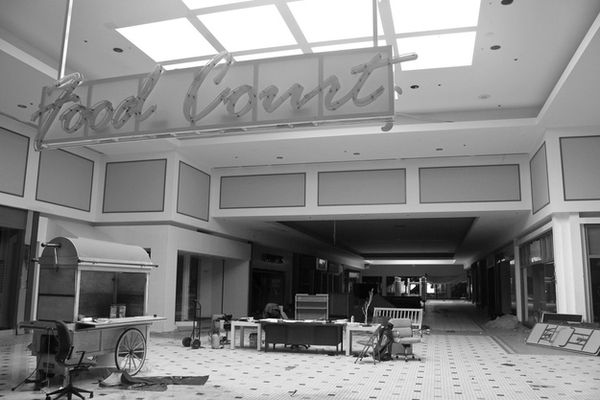 Crédits
Crédits  iCrédits
iCrédits 









